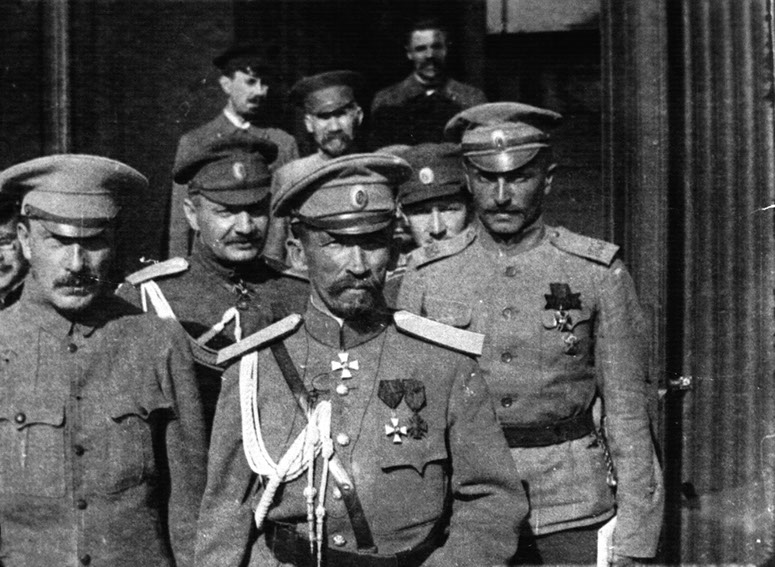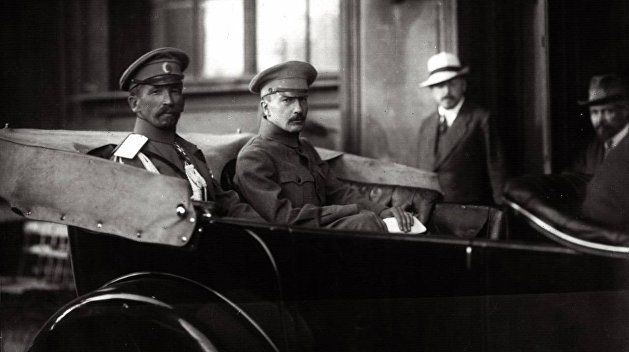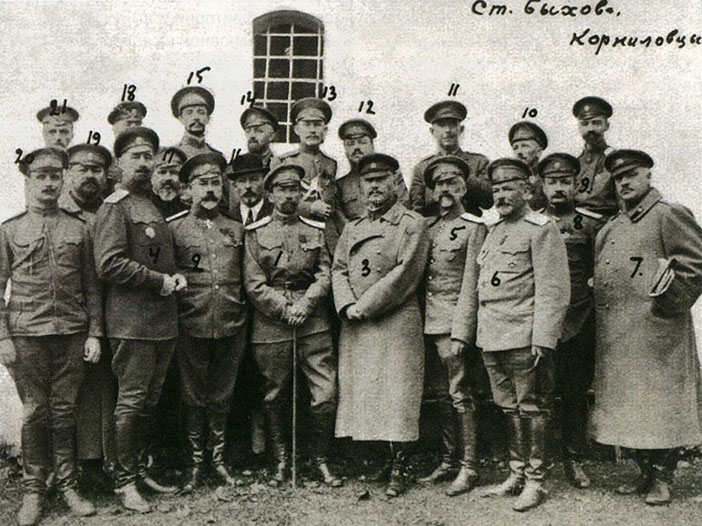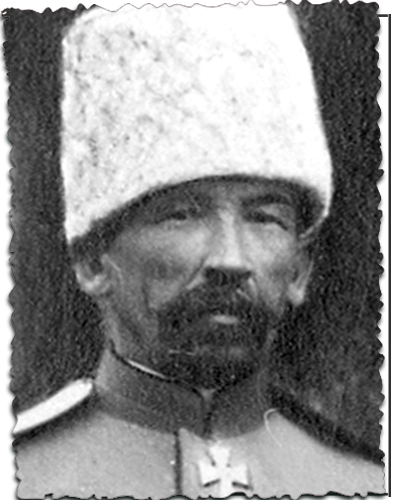



PERSONALITIES
1870–1918
KORNILOV
LAVR
Commander-in-Chief of the Russian Army (1917)
Head of the White movement in the south of Russia

Lavr Kornilov was born in Ust-Kamenogorsk into a family of a retired Cossack officer. He graduated from Siberian Cadet Corps in Omsk, Mikhailovskoye Artillery School (1892), and the Nicholas General Staff Academy (1898). While serving in Turkestan Military District, he made several research and reconnaissance expeditions in East Turkestan, Afghanistan, and Persia. A participant of the Russo-Japanese War and World War I. In the spring of 1915, commanding the 48th division in the Carpathians, he was captured and fled.
In March 1917, Kornilov was appointed Commander-In-Chief of the troops of the Petrograd Military District. By order of the Provisional Government, in Tsarskoe Selo, he announced the Empress Alexandra Fyodorovna and her family that they were arrested. At the end of April 1917, Kornilov was appointed Commander of the 8th Army. In June, he was promoted to General-of-the-Infantry. In July, he became Commander-in-Chief of the Southwestern Front. Kornilov was an initiator of the reintroduction of the death penalty on the front line, which was restored on July 12, 1917. From July 19 to August 27, 1917, he was the Supreme Commander-in-Chief. He presented the Provisional Government the demands, which came down in history as “the Kornilov military program”.
Late August of 1917 saw Kornilov try to organize a coup to disperse the Soviets and introduce a military dictatorship to end the war and achieve success (Kornilov affair). He sent the 3rd Cavalry Corps of General Aleksander Krymov and the Caucasian native cavalry division to Petrograd. His actions were based on a previous agreement with Alexander Kerensky. Soon, the latter changed his position and declared Kornilov a rebel. Kornilov was removed from office and arrested.

From September to November 1917, the General and his associates were kept under arrest in Mogilyov and Bykhov. After the fall of the Provisional Government, they moved to the Don area, where they began to form the Volunteer Army to fight the Bolsheviks. Kornilov was the first Commander-in-Chief of the Volunteer Army. Since December 1917, he was a member of the Don Civil Council.
In February 1918, he led the Volunteer Army on the First Kuban campaign (Ice march) to join up with the Kuban White forces. He died in the battle for Yekaterinodar on April 13, 1918. The coffin with the body of Kornilov was secretly buried during the retreat through the German colony Gnachbau. On the next day, the Bolsheviks, who gained control of the village, unearthed Kornilov’s coffin, dragged the General’s body to Yekaterinodar, and burned it.

Welcoming to Lavr Kornilov at the Alexandrovsky railway station in Moscow, where he arrived to take part in the State Conference.
Moscow. August 1917.
SMPHR. F.IX Vs-7828/2



Lavr Kornilov (center) and Boris Savinkov (left).
Summer 1917.

General Lavr Kornilov, Commander-in-Chief (left) and Deputy Minister of War Boris Savinkov.
August 1917.


Group generals and officers, led by Lavr Kornilov, kept under arrest in the Bykhov prison.
Mogilyov region. Autumn 1917.







Commander-in-Chief of the Volunteer Army
Whites
© 2021 The State Museum of Political History of Russia. All rights reserved. See Website Terms of Use on About Project page


